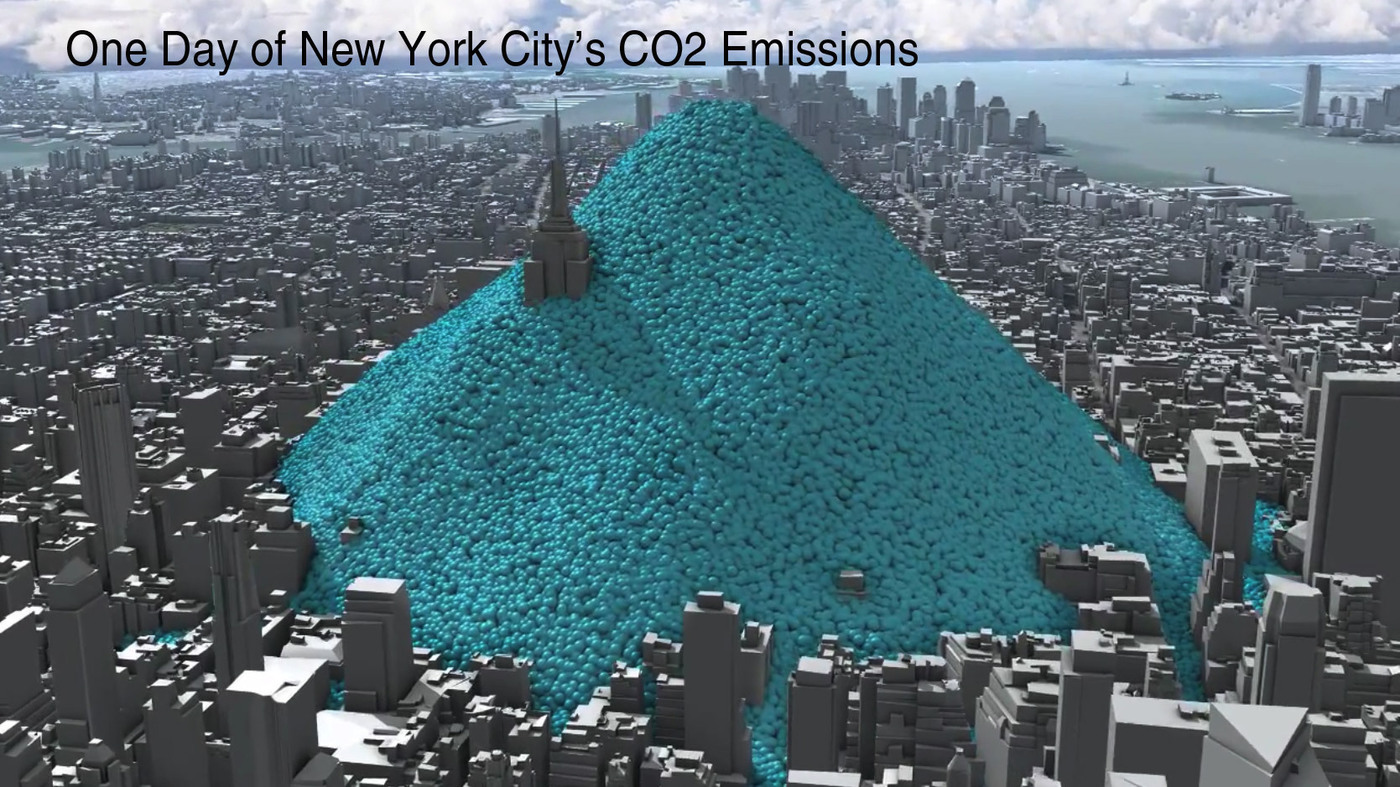
Image: NPR
Arc provides systematic assessment and objective scoring for spaces, buildings and places. Arc applies these capabilities to power LEED v4.1 O+M and LEED recertification. Reducing greenhouse gas emissions (GHG) is a long-standing LEED system goal and, consequently, a critical performance indicator in Arc. Arc uses operational data on energy consumption to estimate GHG emissions from building operations and transportation.
GHG emissions & building operations
GHG emissions from building operations come from the on-site combustion of fuels and the use of off-site energy sources, such as purchased electricity and steam.
Arc classifies on-site combustion as Scope 1 emissions from the perspective of the operational control of project. The use of this terminology reflects guidance in the World Resources Institute GHG Protocol. Note that this may or may not match GHG emissions allocations for building owners, tenants or other stakeholders based on their interpretation of GHG emissions reporting protocols. For example, the project team may have operational control of on-site fuel use, but financial control remains with the owner. Different interpretation of these conditions could lead to differences in accounting and reporting for the same energy use.
Arc calculates combustion emissions based on user-provided data about fuel consumption: most often natural gas, diesel fuel, propane and similar fossil fuels. Arc converts the quantity of fuel burned into a quantity of GHG emissions using emissions factors published by the U.S. Environmental Protection Agency (EPA) and the United Nations Intergovernmental Panel on Climate Change. The most common calculation is:
mTCO2e = units of natural gas (therms) x mTCO2e per therm
Arc calculates indirect emissions (i.e., purchased electricity) based on user-provided data on electricity and/or steam use. Arc converts the quantity of energy used−−typically kilowatts of purchased electricity−into a quantity of GHG emissions based on a grid emissions factor. The default emissions factors are based on the U.S. EPA eGRID database for projects in North America and data from the International Energy Administration for projects outside of North America. The most common calculation is:
mTCO2e = units of electricity consumed (kWh) x mTCO2e per kWh
Arc typically makes this calculation by applying average annual emissions intensity (e.g., mTCO2e per kWh) to monthly energy use data.
New in July 2019: Arc allows projects to set custom emissions factors for purchased energy. Custom emissions factors override Arc defaults and provide more flexibility for users, and can be specified annually or monthly to address situations where the local emissions profile of a project’s energy supply is different from Arc’s default (e.g., eGRID or IEA). For example, projects may use a custom emissions factor when they use electricity from a community solar project or a combined heat and power system. In the future, Arc may support more time resolved emissions factors to better represent dynamic energy supply situations.
GHG emissions & transportation
Based on LEED requirements, Arc also calculates emissions associated with occupant commuting. These emissions are established based on survey responses describing travel mode, trip length and trip frequency. The travel mode is used to establish the emissions intensity of commuting as emissions per unit distance (e.g., CO2 equivalent per mile or kilometer). These emissions factors are currently based on 2018 data published by the U.S. EPA for a range of mobile sources (e.g., trucks, buses, motorcycles, etc.). Emissions intensity is multiplied by the distance traveled per each travel mode and number of trips per week by route and mode. The result is an estimate of total commuting emissions for the project. The most common calculation is:
mTCO2e = for each mode(distance traveled per mode * GHG emissions/distance)
Travel modes include single passenger automobile, train, bus, biking, walking, etc. Total transportation emissions are usually estimated for the whole building and then reported as the average one-way GHG emissions per occupant.
New in July 2019: Arc allows users to separate travel information for regular building occupants and visitors. These two groups are scored separately. This allows project teams to more accurately represent travel behavior for facilities with high proportions of visitors, such as stadiums or airports.
Other emissions
Arc does not calculate GHG emissions for other sources, notably including materials, water, or waste at this time.
Emissions reporting
Arc summarizes project GHG emissions in two places:
- Each project has an Analytics tab that summarizes building-related emissions, transportation emissions and a variety of aggregations (e.g., total Scope 1 and 2).
- Projects can be grouped into portfolios. Arc provides additional information for each portfolio, including a comparison of project-level building and transportation emissions, as well as additional aggregations.
Together, these provide a clear, comparable summary of project GHG emissions based on measured real-world performance data.
More Information
The Arc team welcomes the opportunity to help users understand GHG emissions calculations and better use tools like custom emissions factors. Reach out to contact@arcskoru.com for more information or assistance.
